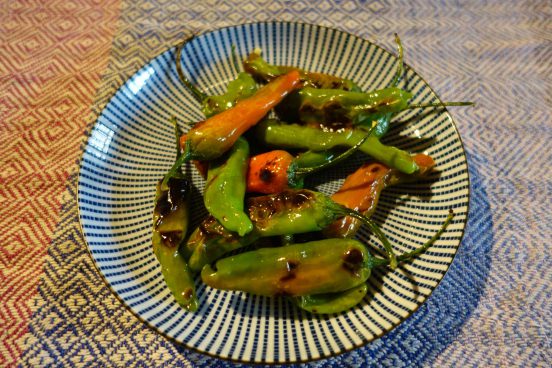In traditionally (since the late 17th century, anyways) bland cuisines, we are seeing an increasing popularity of stronger aromas and flavors, not least from the chilli.
The trend is often decried as a symptom of worsening senses of taste, assaulted and miseducated as they are, supposedly, by industrially processed and artificially flavored “food.”
There is something to be said for this view, but perhaps not in the way it is commonly rationalized.
The old lark is that chilli has been used to mask bad flavors, making it possible to sell spoiled, smelly meat by covering its smell and taste with the chile pepper’s pungency.
(If you’ve ever actually smelled or tasted spoiled meat, you’d know that this assertion is pretty ridiculous. And in addition, it’s likely that this view is based more on an idea of earlier times having had to be worse than modern ones, even though enough problems with salmonella and fecal germs on meat occur nowadays, while people before had enough contact with their food to know something like spoiled meat.)

The new tall tale is that chilli has been getting so popular in recent times because people have ever-less-well-developed senses of taste. So, it is argued that the ever-more pungent chile pepper sauces and chilli flavorings added to ever-more products are there to still give those people some excitement for their tastebuds.
I call snobbish bullshit that rationalizes its “better than thou”-attitude by seeking out sciency-sounding arguments.
This denigration of hot and spicy flavors has been going on since spices got cheaper circa around Baroque times and sugar became the new status symbol to put on the table.
French cuisine, which managed to establish itself as the trend-setter among the rich and noble, shifted to ‘cleaner’ and simpler tastes rather than the earlier strong and spicy flavors – and as things go with food, the upper crust’s new luxury becomes the later standard to which everyone aspires.
We are still living with something of the attitude that resulted from that, even as the continuing globalization and cross-fertilization of cuisines has also brought Japanese and Indian and Mexican and Chinese influences into the mix.

There is some stupidity going around when chile pepper is added near-randomly, and especially “the hottest” chile pepper, no matter what its flavor.
When a person’s approach to food is that it just has to be more and more hot, something is going wrong.
It’s not a matter of strong flavors or subtle ones, however.
It is a matter of approaching flavors, like everything, with attention and care.
The Advantage of Strong Flavors
There’s a particular advantage that strong aromas and flavors have in all that.
Too many foods nowadays don’t have strong flavors anymore, just sweetness and fat and perhaps salt or something to make them umami.
Thus, we are getting too much of the simple, smooth tastes that are exactly what we have evolved to like, to hardly get enough of – in fact, to hardly even notice except for the slight pleasure we gain while we consume them.
In light of that, it’s much better to have foods which make us pay attention to them, with strong and special aromas and flavors.
There are also, after all, many more aromatic and flavorful foods that we love and enjoy.
Hoppy beer, strong coffee,… or strongly aromatic spices.
Again, I fall into my usual preaching: There’s a world of flavors and aromas out there, waiting for us to discover it – and to do us good.


Leave a Reply
You must be logged in to post a comment.